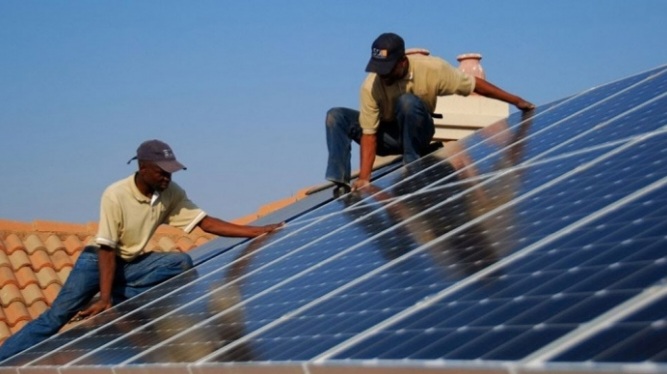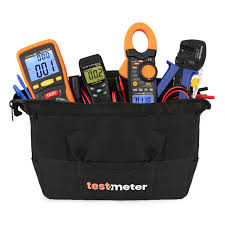Solar Inverter Types and How to Choose the Best for Your System
When most people think about solar power, the first thing that comes to mind is the solar panel. After all, it’s the panel that captures sunlight and converts it into electricity. But here’s the truth: without a good inverter, your solar panels are just fancy roofing tiles. The inverter is the heart of any solar power system—it takes the direct current (DC) from your panels and turns it into alternating current (AC) that your appliances and the grid can use.
Over the years, as solar technology has evolved, different types of inverters have emerged, each with its own strengths, weaknesses, and best-fit applications. Choosing the right inverter is often the difference between a smooth, reliable solar system and one that constantly leaves you scratching your head.
Let’s dive into the main types of solar inverters and how you can decide which is best for your home or business.
1. String Inverters (Centralized Inverters)
How They Work
String inverters are the oldest and most common type. Panels are connected in a “string” (series), and all the power flows into a single inverter, which then converts DC to AC. Think of it like a classroom where the performance of every student affects the overall grade—if one panel is underperforming (say, shaded or dusty), the entire string is pulled down.
Advantages
- Proven technology: They’ve been around for decades, so they are well-tested and reliable.
- Cost-effective: Generally cheaper than other inverter options.
- Easier maintenance: With one central point of conversion, troubleshooting is straightforward.
Disadvantages
- Shading issues: If one panel is shaded, it reduces output from the whole string.
- Scalability: Expanding the system often means replacing the entire inverter or adding another unit.
- Single point of failure: If the inverter fails, the entire system goes down.
Best For
Homes or businesses with consistent sun exposure and little shading. They work great for large, open roof spaces without trees, chimneys, or structures casting shadows.
2. Microinverters
How They Work
Instead of one central inverter, each panel gets its own small inverter mounted on the back. This means every panel operates independently, and shading on one panel won’t affect the others.
Advantages
- Maximum efficiency: Each panel works at its best, regardless of its neighbors.
- Scalability: Easy to expand—just add more panels with microinverters.
- Panel-level monitoring: You can track the performance of each panel individually.
Disadvantages
- Higher upfront cost: More expensive than string inverters.
- Complex maintenance: If a microinverter fails, you may need to get on the roof to fix it.
- Electronics on the roof: Heat and weather can impact long-term durability.
Best For
Roofs with partial shading, complex layouts, or homeowners who want detailed performance tracking.
3. Power Optimizers (Hybrid Approach)
How They Work
Power optimizers are a middle ground between string inverters and microinverters. Each panel gets a small device (optimizer) that conditions the DC power before sending it to a central inverter. Unlike microinverters, they don’t convert to AC at the panel level—they just ensure the panel operates at its maximum power point.
Advantages
- Improved shading tolerance: Similar to microinverters.
- Panel-level monitoring: Allows visibility into each panel’s performance.
- Lower cost than microinverters: More affordable while still boosting efficiency.
Disadvantages
- Still dependent on central inverter: If the inverter fails, the whole system is down.
- Complex installation: More components mean more wiring and potential points of failure.
Best For
Installations where shading is a concern but the homeowner wants a balance between cost and performance.
4. Hybrid Inverters
How They Work
Hybrid inverters can manage both solar panels and batteries. They allow you to store excess energy in batteries and use it when needed, such as at night or during grid outages.
Advantages
- Battery integration: Seamlessly combines solar and storage.
- Energy independence: Gives you backup power and greater control over your electricity usage.
- Flexible operation: Can prioritize solar, grid, or battery power depending on your needs.
Disadvantages
- Higher upfront cost: More expensive than standard string inverters.
- More complex system: Requires careful design and setup.
Best For
Homeowners planning to install solar batteries, either now or in the future. Great for areas with frequent blackouts or high electricity tariffs.
5. Off-Grid Inverters
How They Work
These are used in systems not connected to the utility grid. They work directly with batteries to supply power. The inverter manages charging, discharging, and converting battery power into usable AC electricity.
Advantages
- Energy independence: Perfect for remote locations without grid access.
- Tailored solutions: Can be designed to meet very specific energy needs.
Disadvantages
- No grid backup: If the system runs out of stored energy, you have no electricity.
- More expensive setup: Requires batteries and charge controllers, increasing system cost.
Best For
Remote homes, cabins, or rural installations where connecting to the grid isn’t practical.
6. Grid-Tie Inverters
How They Work
These are designed for systems connected to the utility grid. They synchronize your solar system’s output with the grid’s frequency and voltage, allowing you to send excess power back to the grid (net metering).
Advantages
- High efficiency: Designed for grid-connected systems.
- Lower cost: No need for batteries.
- Net metering benefits: Can reduce your electricity bill significantly.
Disadvantages
- No backup power: If the grid goes down, your solar system shuts off too.
- Dependent on grid availability: Works best in stable grid regions.
Best For
Urban and suburban homeowners who want to save on electricity bills without the added cost of batteries.
How to Choose the Best Solar Inverter
Choosing the right inverter depends on more than just price. Here are some factors I always consider when designing a system for a client:
- Shading & Roof Layout
- Minimal shading? Go for a string inverter.
- Lots of shading or complex roof? Microinverters or optimizers are worth it.
- Budget
- Tight budget? String inverters are cost-effective.
- Willing to invest for performance and monitoring? Microinverters or optimizers.
- Battery Plans
- Want backup power now or later? Hybrid inverter.
- Strictly grid-connected? Grid-tie inverter is enough.
- No grid at all? Off-grid inverter is mandatory.
- System Size & Expansion Plans
- For large systems with room for future expansion, microinverters or hybrid inverters provide flexibility.
- Durability & Warranty
- Check the warranty period. String inverters typically last 10–15 years, while microinverters and optimizers often come with 20–25 years.
Final Thoughts
The inverter you choose will dictate how reliable, efficient, and future-proof your solar system is. While solar panels get the spotlight, the inverter quietly does the heavy lifting. As an installer, I always remind clients that a solar investment is about more than just today—it’s about ensuring you have clean, dependable power for decades to come.
If you’re considering solar, take the time to match the right inverter to your energy goals, budget, and environment. And don’t be afraid to ask your installer tough questions—it’s your system, and the right inverter will make all the difference.







